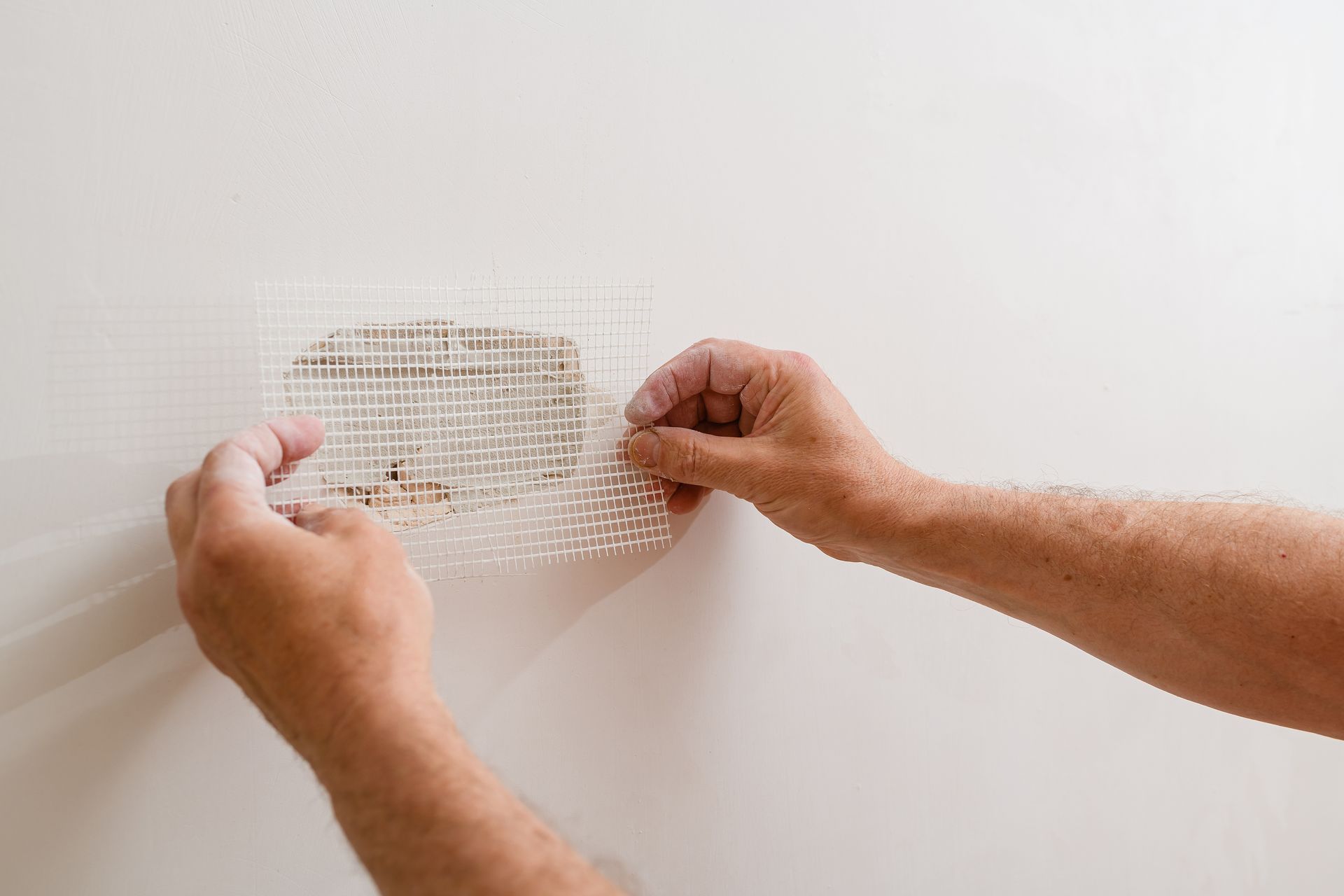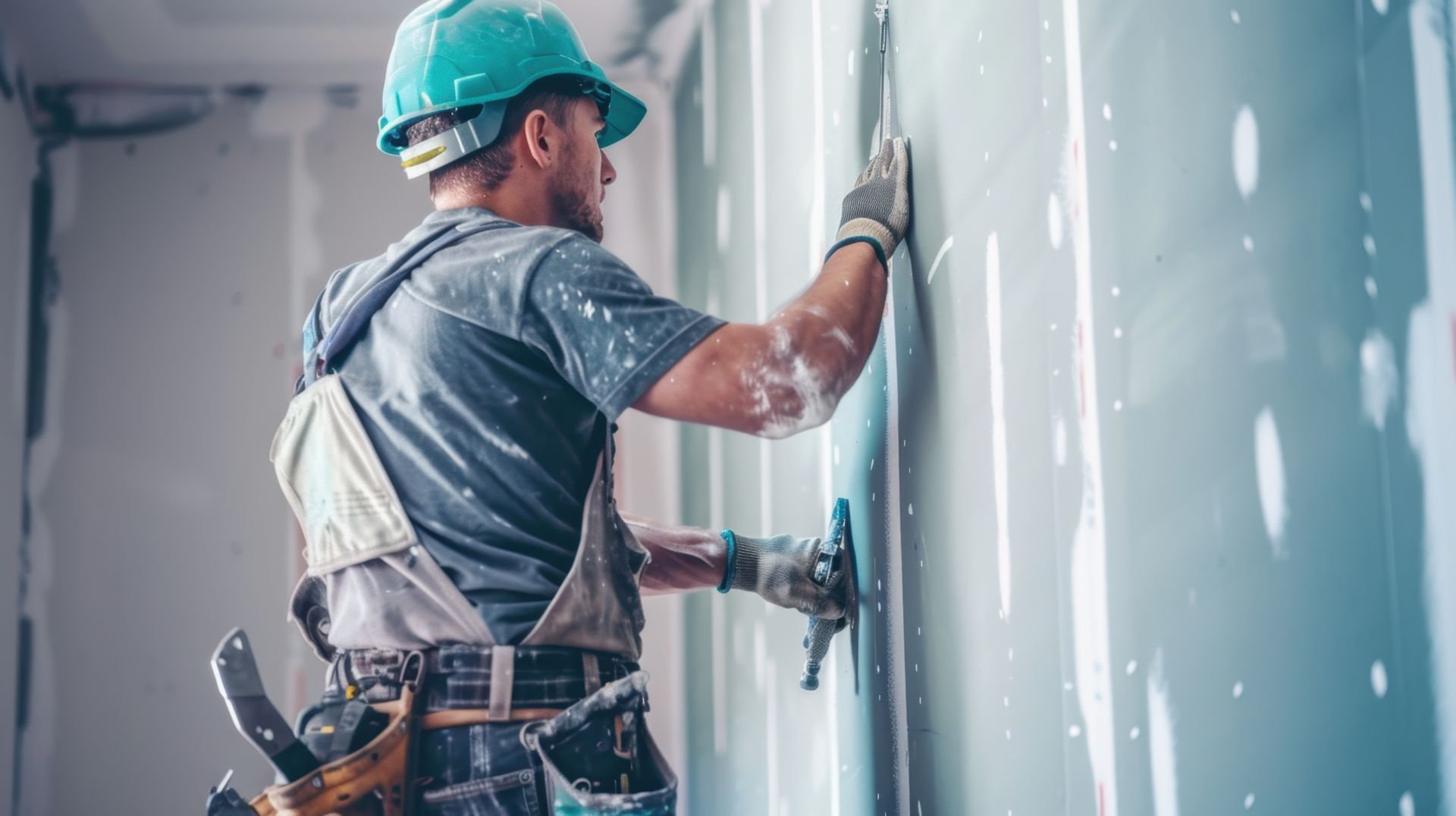Master Drywall Repair: Stress Crack Fix Guide!!

Keeping a nice home is important for homeowners and commercial properties. This often means fixing drywall problems. At Professional Home Repair, we focus on exceptional customer service and our dedication to high-quality drywall repair and drywall finishing. We are experts in fixing stress cracks that many homeowners face in Mesa, Tempe, Gilbert, AZ, and nearby areas. Our skilled team has years of experience dealing with different drywall issues. We make sure to give you a flawless finish on your walls and ceilings.
Understanding Stress Cracks In Drywall
Stress cracks usually look like thin, hairline lines or slightly larger gaps on your walls or ceilings. Unlike holes or damage from impact, stress cracks often form slowly over time. This is usually caused by the settling of your house or environmental changes.
Even though these cracks may look like just a surface issue, they can point to deeper structural problems or moisture issues. If you do not fix these problems, they can get worse as time goes on.
Identifying Different Types Of Drywall Cracks
Before starting any drywall repair, it’s important to figure out what kind of crack you have. This will help you know how to fix it properly.
- Hairline cracks are very thin and hard to see. They often appear around doors, windows, or where walls and ceilings meet. These cracks usually show minor settling or seasonal changes in the building.
- Wider cracks might show a clear gap between drywall sheets. This often means there has been more movement. Fixing these may need larger repairs that include adding extra drywall tape and compound.
- Cracks on textured surfaces, like popcorn ceilings, need a different method. You must replicate the original texture when you make the repair.
Using the right approach is important for good drywall repair.
Common Causes Of Stress Cracks In Walls And Ceilings
One common reason for stress cracks is that houses naturally settle over time. This is especially true for newer buildings. When the foundation settles, small movements in the framing can put stress on the drywall, which leads to cracks.
Changes in temperature and humidity can also cause drywall cracks. Drywall will expand and shrink when moisture levels change. Big swings in these levels can create stress and cause cracks, especially in places that do not have good airflow.
Water damage is another major reason for cracks. Leaks from pipes, roofs, or windows can soak into the drywall. This weakens it and encourages cracks to form. It’s important to fix any water issues before repairing the cracks. This helps stop them from coming back.
Essential Tools And Materials For Repairing Drywall Cracks
Effective drywall repair needs the right tools and materials for a smooth finish. You only need a few basic items, which you can find at any hardware store. Before you start, gather all the tools you need. This way, you can avoid interruptions.
When you have everything ready, the repair will go easier. You will also get a good-looking result.
List Of Tools You Will Need
For fixing basic drywall cracks, you'll usually need these tools:
- Putty Knife: This is for applying and smoothing joint compound. A 6-inch and a 12-inch knife work well for different sizes of cracks.
- Joint Compound: This is the main material to fill and patch cracks. Picking a pre-mixed type makes it easier to use.
- Drywall Tape: This helps to strengthen wider cracks and stop them from coming back. You can use either paper or fiberglass mesh tape.
- Sanding Block: This is important for making the dried joint compound smooth. It helps to create a flat surface before you prime and paint.
- Utility Knife: This is useful to make cracks a bit wider. This helps the joint compound stick better.
Choosing The Right Materials For Effective Repair
While basic drywall repair often involves standard joint compound, several specialized options cater to specific situations. Consult with a reputable drywall repair Mesa AZ contractor or a knowledgeable professional at your local hardware store to determine the best material for your needs.
For larger holes or extensive repairs, consider using a drywall texture patch, which provides a sturdy base for the joint compound after mudding. Additionally, applying a primer specifically designed for drywall before painting ensures better paint adhesion and a fresh coat of paint for a more professional finish.
| Material | Description |
|---|---|
| All-Purpose Joint Compound | Suitable for most general repairs, filling cracks, and finishing. |
| Setting-Type Joint Compound | Dries faster than all-purpose, ideal for larger holes or when a quicker drying time is needed. |
| Drywall Patch | Pre-made patches in various sizes for repairing larger holes or damaged sections. |
| Drywall Primer | Seals the repaired area and provides a uniform surface for paint adhesion. |
Step-by-Step Guide To Repairing Stress Cracks
Repairing stress cracks in drywall is a simple DIY task if you have the right tools and some patience. Before you begin, make sure to cover your floors and nearby furniture to keep them safe from dust and mess.
If you follow these steps carefully, you can fix those annoying cracks. This will help give your walls and ceilings a smooth and flawless finish.
Preparing The Cracked Area For Repair
- Start by cleaning the area around the crack. Remove loose debris or peeling paint with a putty knife or scraper.
- If the crack is dirty or greasy, wipe it with a damp cloth. Let it dry completely before moving on.
- Next, check the crack closely for signs of issues, like water damage or mold. If you find anything serious, it's better to talk to a professional drywall contractor before continuing the repair.
- Finally, take a sanding block and lightly sand the area around the crack. This will make the surface a bit rough. It helps the joint compound stick better and gives a smooth finish. Remember, proper drywall prep is very important for a perfect result.
Techniques For Patching Small And Large Cracks
For small cracks or hairline cracks, apply a thin layer of joint compound with a putty knife. Press it firmly into the crack. Use the knife to smooth out the edges. This will help create a nice transition to the wall around it. Let the compound dry completely. After that, sand it smooth and put on a primer.
For larger cracks, especially ones wider than 1/4 inch, you need drywall tape. This will stop the cracks from coming back. First, put down a layer of joint compound. Then, place a piece of drywall tape over the crack. Make sure the tape sticks well. Next, add another layer of compound over the tape. Smooth it out and allow it to dry fully. See more on Boost Home Value: Drywall Repair Guide.
If you have textured ceilings, like popcorn ceilings, it's best to talk to drywall experts. You can also watch tutorials on popcorn ceiling removal and texture matching to ensure your belongings and the area are well taken care of. This will help you repair the area so it blends perfectly with the rest of the ceiling.
Tips To Prevent Future Stress Cracks In Drywall
Preventing stress cracks in the future means finding out what might cause them and using practices that reduce pressure on your drywall. Keeping the humidity levels steady is very important. This is especially true in dry seasons, so you might need to use a humidifier.
Also, it is important to deal with any signs of water leaks or moisture coming in right away. This can help stop any damage to your drywall.
Proper Installation Techniques To Avoid Cracks
Proper installation is key to stopping stress cracks and ensuring customer satisfaction. Hiring good drywall installation services helps get the job done right from the start. Skilled professionals at Professional Home Repair know how to frame, space, and fasten correctly. This reduces stress on the drywall.
Using high-quality drywall, including new drywall, is also important. Choose moisture-resistant materials for areas that are humid. This helps avoid problems later on. When picking a contractor for drywall installation or repair, look for those who have years of experience and good reviews from customers.
Always remember, drywall that is installed well is less likely to crack. This can save you time, money, and hassle in the future.
Maintaining Humidity Levels And Structural Integrity
Keeping a steady level of humidity in your home is very important. It helps stop stress cracks that happen when things heat up and cool down. Try to keep the humidity between 30% and 50%. You can use a humidifier when it's dry outside. Make sure to have good air flow in areas where moisture likes to form, like bathrooms and kitchens.
Check your home regularly for water leaks. Pay attention to spots around windows, pipes, and roofs. Fixing leaks fast is important. Water damage can weaken drywall and help mold grow.
Also, check that your home is strong and secure. If you see big cracks or floors that don't seem even, you should talk to a structural engineer. They can look for any problems with the foundation or framing that might lead to drywall issues.
Conclusion
It is important to understand stress cracks in drywall. This knowledge helps you repair and maintain your walls better. By finding out what causes these cracks and using the right tools and materials, you can fix your walls and ceilings effectively. Following a clear guide makes the repair process easier. Also, taking steps to prevent cracks in the future is helpful. Remember, good installation methods and keeping the right humidity levels are crucial for your drywall's strength. If you need expert help or more advice, please
reach out
to us.
You might also like
Professional Home Repair Blog





